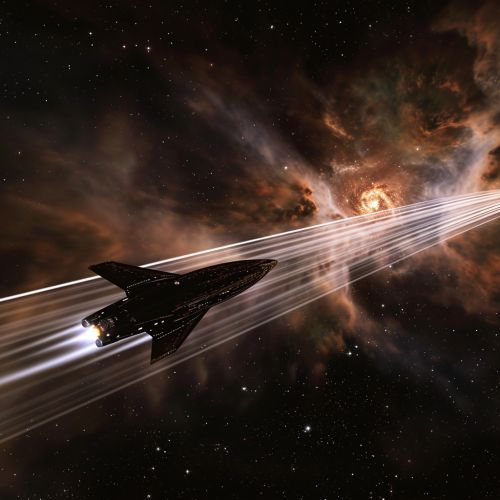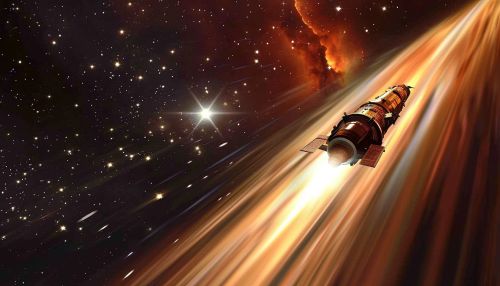Interstellar travel
Introduction
Interstellar travel refers to the hypothetical manned or unmanned travel between stars or planetary systems. The concept, while purely theoretical at this point, has been a staple of science fiction for many years and continues to inspire real scientific investigation. The distances involved in interstellar travel are vast and the challenges immense, but the potential rewards are equally significant.


Theoretical Concepts
There are several theoretical concepts that have been proposed for interstellar travel. These include methods such as generation ships, suspended animation, interstellar arks, and faster-than-light travel.
Generation Ships
Generation ships are a proposed method of interstellar travel that involves a large spacecraft carrying a population of people who would reproduce and die over the course of the journey, with their descendants continuing the journey and eventually colonizing a new planet.
Suspended Animation
Suspended animation is another proposed method of interstellar travel. This involves slowing down the bodily functions of astronauts to a near-stop, allowing them to survive the long journey through space.
Interstellar Arks
Interstellar arks are similar to generation ships, but instead of a population reproducing over the course of the journey, a large number of people would be placed in suspended animation and awakened upon arrival at the destination.
Faster-Than-Light Travel
Faster-than-light travel is a theoretical concept that involves traveling faster than the speed of light, thus significantly reducing the time it would take to travel between stars. This concept is currently purely theoretical and not supported by current understanding of physics.
Challenges
There are numerous challenges associated with interstellar travel. These include the vast distances involved, the need for a large amount of energy, the effects of long-term space travel on the human body, and the need for self-sustaining life support systems.
Distance
The distances involved in interstellar travel are immense. The nearest star to Earth, Proxima Centauri, is approximately 4.24 light-years away. This means that even at the speed of light, it would take over 4 years to reach.
Energy
The amount of energy required for interstellar travel is enormous. Current propulsion technologies are insufficient for such a journey, and new methods of propulsion would need to be developed.
Human Factors
The effects of long-term space travel on the human body are not fully understood. Issues such as the effects of microgravity on the body, exposure to cosmic radiation, and the psychological effects of long-term isolation and confinement would need to be addressed.
Life Support
A self-sustaining life support system would be required for the long journey. This would need to provide air, food, and water for the duration of the journey, as well as deal with waste management.
Potential Solutions
There are several potential solutions to these challenges that are currently being researched. These include new propulsion technologies, such as nuclear propulsion and antimatter propulsion, as well as concepts such as terraforming and astrobiology.
Propulsion Technologies
New propulsion technologies are being researched that could potentially make interstellar travel feasible. Nuclear propulsion involves using nuclear reactions to provide the energy for propulsion, while antimatter propulsion involves the use of antimatter, which has the potential to provide a much higher energy density than other forms of propulsion.
Terraforming
Terraforming is the hypothetical process of modifying the environment of a planet to make it habitable for human life. This could potentially allow for the colonization of planets that would otherwise be uninhabitable.
Astrobiology
Astrobiology is the study of life in the universe, including the search for extraterrestrial life. This field could potentially provide insights into how life could survive and thrive in the harsh conditions of space.
